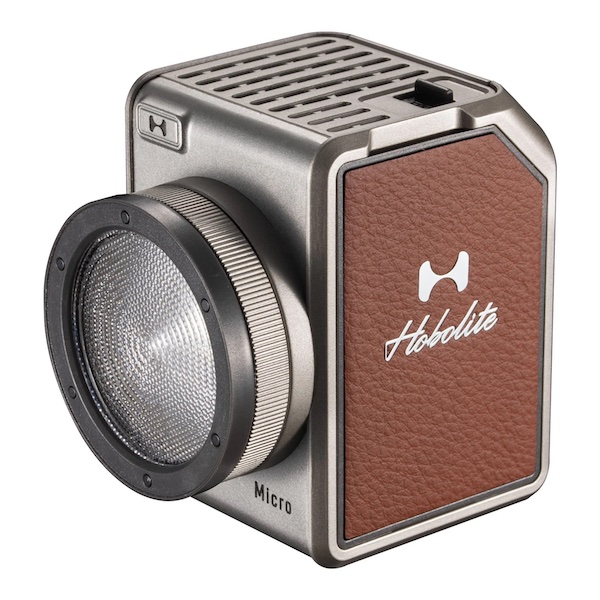Lighting
Photographers are often tasked with shooting both stills and videos—especially wedding and event photographers. So all you hybrid shooters will be pleased to see the new StellaPro Reflex and Reflex S lights from Light & Motion hit the market. (The StellaPro Reflex costs $849; the Reflex S is $1,096). These Continuous Strobe Hybrids (C.S.H) offer both continuous LED lighting and Digital Burst™ technology so photographers can seamlessly switch between the two modes as needed. But there’s a lot more going on than just the Reflex’s duality.

The flash behind the Reflexes’ Digital Burst™ mode is blazingly fast: up to 10 frames per second for the Reflex and up to 20 frames per second for the Reflex S.
[Read: Profoto’s New Powerful, Portable B10X and B10X Plus Strobes]
Award-winning photographer and WPPI speaker Cliff Mautner photographed a golf swing session using two pre-production Reflex S lights, reporting that using his Nikon D4S, which gets 12 fps, “I shot at 1/3200th of a second, and the Reflex S’s didn’t misfire once,” he says. “Recycle time is pretty much instantaneous.”

He also did a test with a Profoto B1. “It failed after the second fire,” he said, adding that the Profoto “is much, much more powerful [than the Reflex] for a single burst,” and therefore not as quick to recycle.
[Read: Jeremy Cowart’s Lightograph Animates a Still Photo With Moving Light]
Photographer and photo educator Joe Edelman also tested the Reflex S, moving fabric behind a model as he shot in Digital Burst mode.

As you can see, the flash didn’t miss a beat and produced beautiful and consistent color. Edelman, who currently has four of these lights, says, “I imagine this is going to be my primary lighting.”

In addition to the performance of the Reflexes, Edelman also mentions the appeal of the light’s small size (9 x 3.9 x 3.9 inches) and weight (1.8 pounds with battery). Like many of us, Edelman says, “I have no interest in lugging heavy stuff around anymore. The light head [without the battery] fits in the palm of your hand. To me, that’s a win all the way around.” And, he adds, “My studio is smaller and space is at a premium, so anytime I can get good results out of smaller equipment without sacrificing anything, that’s another win.”
[Read: 10 Portrait Photography Lighting Mistakes Easily Fixed]
The StellaPro Reflex and Reflex S lights are set for 5,600K and can be powered by the rechargeable battery (that doubles as a handle) or by an external USB-C power source for up to 9,000 lumens for continuous shooting and up to 18,000 lumens in Digital Burst™ mode. Add to that an optional Spot Optic for up to 43,000 lux in continuous and up to 86,000 lux in burst.

In addition to adjusting lumens, the duration (measured in milliseconds) can be adjusted on the Reflex S from 400 us to 5 ms. The less expensive Reflex’s duration is fixed at 5 ms. And, the ability to fire off 15,000 full-power bursts on a single battery charge is quite amazing.
[Read: Off-Camera Flash Photography—5 Techniques for Dramatic Portraits]
Settings can be adjusted on the rear panel and can be fired remotely with Elinchrom and Godox triggers. According to the user manual, it seems there are some control options via Elinchrom and Godox transmitters, however, there’s no continuous power control available with Godox (although you can turn continuous lighting on or off). You can plug in any 3.5mm receiver to work with other triggers, but we’re not clear on how much control is available.
Since the Reflex lights are compatible with a wide range of modifiers, including proprietary options, Profoto, Chimera and Bowen (via adapters), Edelman says, “Nothing changes in the way I place my lights.” He goes on to say that, “Industry wide, we tend to get set in our ways. You want your equipment to become an extension of your thought process and work instinctively. . . .With the Reflex S, I don’t have to think about [working differently with] modifiers.”
[Read: How to Imitate & Enhance Natural Light, Indoors and Out]
These lights are both intriguing and exciting and, as Edelman points out, that, “from an industry standpoint, it signals to photographers that it’s time to think about lighting differently.” The Reflex and Reflex S are first generation, though, and since there’s an iOS app for firmware updates (and registration), we wonder what Light & Motion has in mind for the future of the Reflex line.





